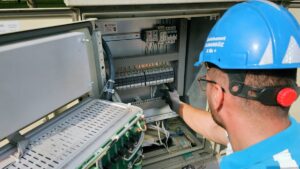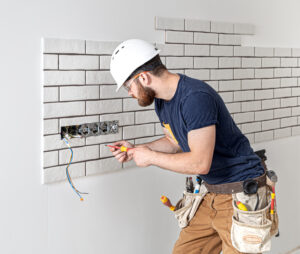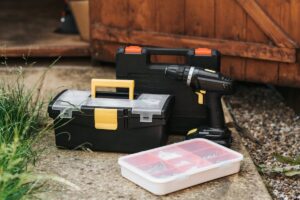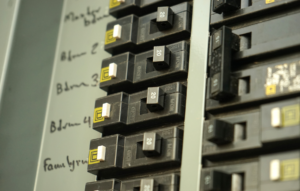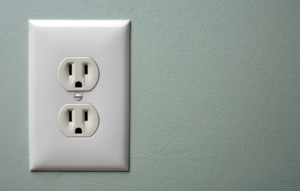Electrical overloads can be a major safety hazard in homes and workplaces. At CMS Maintenance Service, we understand the importance of maintaining a safe electrical environment. In this guide, we’ll walk you through the best practices to avoid electrical overloads with power cords, ensuring your safety and the longevity of your electrical systems.
Understanding Electrical Overloads
An electrical overload occurs when too much electrical current is drawn through a circuit, exceeding its capacity. This can lead to overheating, damage to appliances, and even electrical fires. The key to preventing overloads is understanding how they occur and taking proactive steps to manage your electrical load.
The Basics of Electrical Load
Every electrical circuit in your home or office is designed to handle a specific amount of current, measured in amperes (amps). When you plug in too many devices or use high-wattage appliances, you can exceed this limit, causing an overload. Power cords and extension cords can exacerbate this problem if not used correctly.
Choosing the Right Power Cords
One of the first steps in preventing electrical overloads is selecting the right power cords. Here are some tips:
- Check the Gauge: The thickness of the wire, or gauge, determines how much current the cord can safely carry. Lower gauge numbers indicate thicker wires and higher capacity. For heavy-duty appliances, use a cord with a lower gauge (e.g., 12 or 14).
- Length Matters: Longer cords have more resistance, which can reduce their capacity. Choose the shortest cord that will do the job.
- Look for Certifications: Ensure your power cords are certified by recognized safety organizations, such as UL (Underwriters Laboratories).
Proper Usage of Power Cords
Even the best power cords can’t prevent overloads if not used correctly. Follow these guidelines to use your power cords safely:
- Avoid Daisy Chaining: Connecting multiple extension cords together can increase resistance and risk of overload. Instead, use a single, appropriately rated cord.
- Limit High-Wattage Devices: High-wattage devices like space heaters and microwaves should have their own dedicated outlets.
- Regular Inspections: Check power cords for signs of wear and tear, such as fraying or exposed wires. Replace damaged cords immediately.
Power Strip Safety
Power strips are convenient but can also be a source of overload if misused. Here’s how to use them safely:
- Use Surge Protectors: Opt for power strips with built-in surge protection to guard against power spikes.
- Know the Limits: Most power strips have a maximum load capacity (usually around 15 amps). Do not exceed this limit.
- Avoid Heat Sources: Keep power strips away from heat sources, such as radiators or sunlight, to prevent overheating.
Managing Electrical Load
Effectively managing your electrical load is crucial in preventing overloads. Here are some strategies:
- Calculate Your Load: Add up the wattage of all devices on a circuit to ensure it doesn’t exceed the circuit’s capacity. Most household circuits are 15 or 20 amps (1800 to 2400 watts).
- Distribute Devices: Spread high-wattage devices across multiple circuits to avoid concentrating too much load on a single circuit.
- Upgrade Your System: If your electrical needs exceed your current system’s capacity, consider upgrading your wiring or adding new circuits. CMS Maintenance Service can help with these upgrades to ensure your home or office is safe and efficient.
Signs of Electrical Overload
Being aware of the signs of electrical overload can help you take action before serious problems occur. Watch out for:
- Frequent Tripping of Circuit Breakers: This is a clear sign that your circuit is overloaded.
- Dimming Lights: Lights that dim when you turn on appliances indicate a strained circuit.
- Burning Smell: If you smell burning plastic or rubber, unplug devices immediately and inspect your cords and outlets.
- Warm or Discolored Outlets: Overloaded circuits can cause outlets to become warm or discolored. This is a serious warning sign.
Responding to Electrical Overloads
If you suspect an electrical overload, take immediate steps to reduce the load and prevent damage:
- Unplug Devices: Start by unplugging all devices on the overloaded circuit.
- Reset the Breaker: If a circuit breaker has tripped, reset it once the load has been reduced.
- Evaluate: Identify which devices or combinations caused the overload and adjust your usage accordingly.
- Seek Professional Help: If you experience frequent overloads, contact CMS Maintenance Service. Our expert electricians can assess your system and recommend solutions.
Preventive Measures
Preventing electrical overloads requires a combination of proper equipment, careful usage, and regular maintenance. Here are some additional preventive measures:
- Install Dedicated Circuits: For high-wattage appliances, install dedicated circuits to handle their load.
- Upgrade to Modern Outlets: Consider upgrading to outlets with built-in overload protection.
- Regular Maintenance: Schedule regular electrical inspections with CMS Maintenance Service to identify and address potential issues before they become serious problems.
Ensuring Safe Use of Power Cords to Prevent Electrical Overloads
Avoiding electrical overloads with power cords is essential for maintaining a safe and efficient electrical system in your home or office. By choosing the right cords, using them correctly, and managing your electrical load, you can prevent overloads and protect your property. At CMS Maintenance Service, we are committed to providing top-notch electrical services in Alabama and Georgia. Contact us today for all your electrical needs, from inspections to upgrades and repairs.



